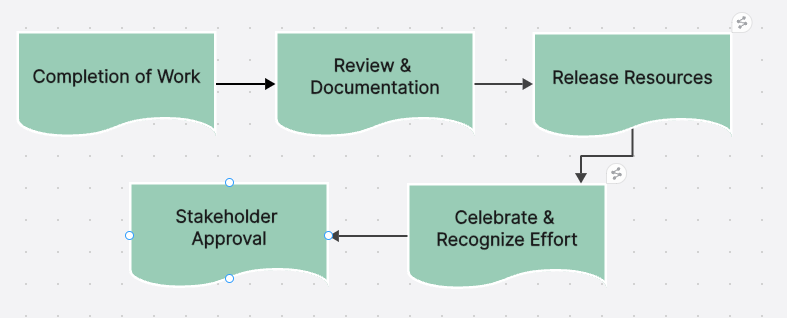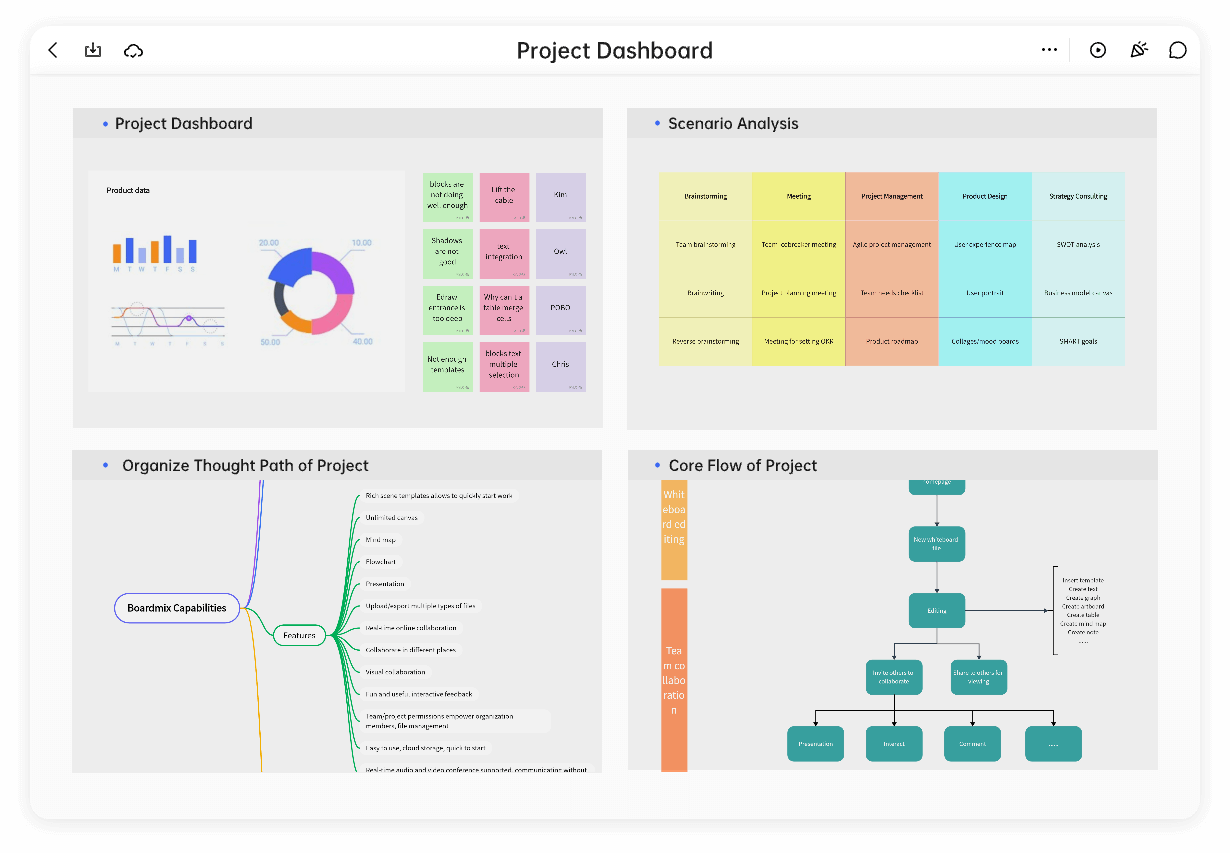The journey of a project is often likened to a marathon, with the finish line being the most crucial part. This is where Project Closure comes into play. A vital yet often overlooked phase in project management, it encapsulates the final bow that signifies successful completion and sets the stage for future endeavors. But what does it entail? And how can it be navigated effectively for a successful project wrap-up?
In this comprehensive guide, we'll explore these questions and more, shedding light on the importance of Project Closure in your project management journey. Let's unlock the secrets to successful project completion together!
Part 1. What Is Project Closure?
Project closure, often overlooked yet vital, marks the final stage in the lifecycle of a project. It's the point where all tasks have been accomplished, objectives achieved, and the final output is delivered to the client or stakeholder. This phase signifies not just the completion of the project but also a successful journey from conception to delivery. It's during this phase that all loose ends are tied up - contracts are closed, resources released, and documentation finalized. More importantly, it provides an invaluable opportunity for reflection and learning. Teams can review their performance against set goals, identify areas of improvement and celebrate successes. This process of introspection helps in refining strategies for future projects and fosters continuous improvement within teams. In essence, project closure is not merely an end but a stepping stone to better project management practices in future endeavors.
Part 2. 5 Phases of a Project Management
Project management is a structured process that typically encompasses five key phases:
Initiation: This is the inception phase where potential projects are identified, evaluated for their feasibility, and defined in terms of scope. It's during this stage that the project's objectives are established and its viability assessed.
Planning: In this critical phase, detailed plans regarding resources, timeframes, costs, and risks are meticulously developed. The planning stage involves setting clear, achievable goals and outlining the steps necessary to reach these goals.
Execution: This is where the rubber meets the road - the actual work on the project begins during this stage. Resources are distributed, teams are informed of their responsibilities, and tasks are executed according to plan.
Monitoring & Control: This ongoing phase ensures that everything aligns with the plan. It involves tracking the project’s progress and performance to ensure it stays on schedule and within budget while maintaining quality standards.
Closure: The final stage signifies completion where all activities across all process groups are formally closed out. This includes delivering the final product or service to the client, releasing project resources, recognizing team efforts, documenting lessons learned, and providing a project report to stakeholders.
Part 3. Why Is Project Closure Important?
Project closure is not just an administrative formality, but a crucial phase in project management. It provides an invaluable opportunity to review and analyze the entire project lifecycle - from initiation to execution. This introspection helps identify what strategies worked well, what challenges were encountered, and how they were overcome. It's a chance for teams to celebrate their successes and acknowledge the hard work that led to those achievements. At the same time, it's also a platform for learning from mistakes or shortcomings. By understanding these pitfalls, teams can devise better strategies and avoid repeating these errors in future projects. Moreover, the lessons learned are documented and become part of the organization's knowledge base, serving as a reference point for future projects. Thus, project closure plays a pivotal role in fostering continuous improvement and driving successful project outcomes in the long run.
Part 4. Steps of Project Closure
The process of project closure is a systematic series of actions that marks the conclusion of the project. It involves several key steps:
Completion of Work: This step ensures that all tasks related to the project have been satisfactorily completed. It's about making sure every deliverable has been produced, every milestone reached, and every goal achieved as per the project plan.
Review & Documentation: Here, a comprehensive review of the project is conducted to assess its performance against the initial goals and objectives. The insights gained from this review are then documented as lessons learned, which can be used as valuable references for future projects.
Release Resources: Once all work is complete and reviewed, resources associated with the project - both human and material - are released back into their respective pools for allocation to other projects.
Stakeholder Approval: This step involves obtaining formal acceptance from stakeholders by presenting them with a final report detailing the outcomes of the project, how well they align with the initial objectives, any issues encountered along the way and how they were resolved.
Celebrate & Recognize Effort: Finally, recognizing and celebrating team efforts is an essential part of project closure. This not only boosts morale but also fosters a sense of accomplishment among team members, motivating them for future projects.
Each step in this process plays a crucial role in ensuring that the project is closed out effectively and efficiently while providing valuable insights for future endeavors.
Part 5. Manage Every Phase of Your Project with Boardmix
Boardmix is more than just an online whiteboard tool - it's a comprehensive project management solution designed to streamline your entire project lifecycle. From the initial stages of identifying and evaluating potential projects, through meticulous planning and execution, all the way to successful closure, Boardmix is there every step of the way. Its intuitive interface and powerful features make it easy to collaborate with team members, track progress, manage resources, and ensure that your project stays on schedule and within budget. Whether you're brainstorming ideas in the initiation phase or wrapping up tasks in the closure stage, Boardmix provides a seamless experience that makes managing your projects easier than ever before.
Key Features of Boardmix Project Management Tool Include:
Collaborative Workspace: Boardmix offers a shared workspace where teams can brainstorm ideas, create workflows, assign tasks, track progress, etc., fostering better collaboration among team members.
Variety of Templates: With numerous templates available for various use-cases like SWOT analysis or user story mapping etc., planning becomes easier than ever before!
Real-time Updates: Changes made by any team member reflect instantly on everyone's screen ensuring everyone stays on the same page always!
Conclusion
In conclusion, a deep understanding of project closure is not just beneficial, but vital for successful project management. It serves as a reflective mirror, providing insights into past experiences - the triumphs and the challenges, the strategies that worked and those that didn't. This learning from past projects becomes a powerful tool for continuous improvement, enabling teams to refine their strategies and practices for better outcomes in future projects. And with tools like Boardmix at your disposal managing every aspect of your projects becomes simpler! So why wait? Start using Boardmix today!








